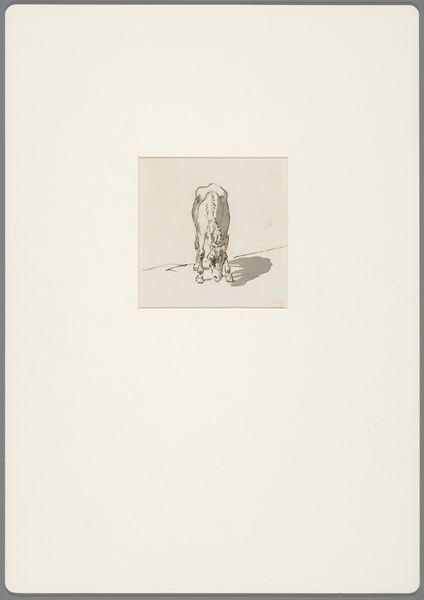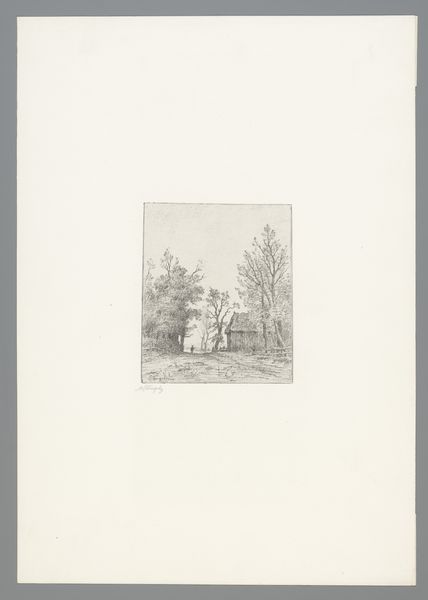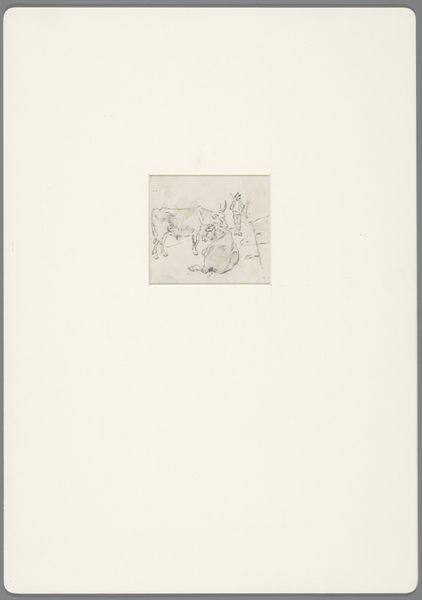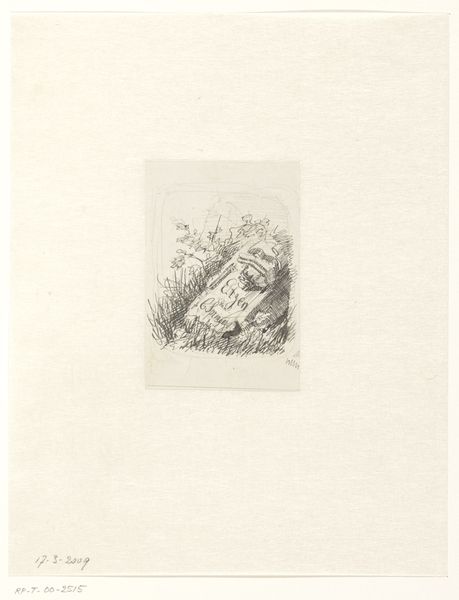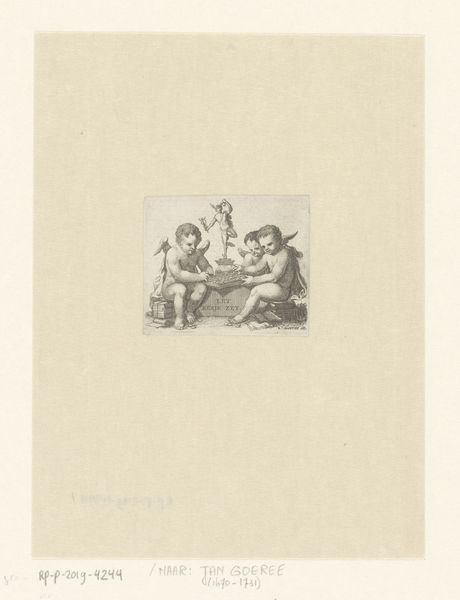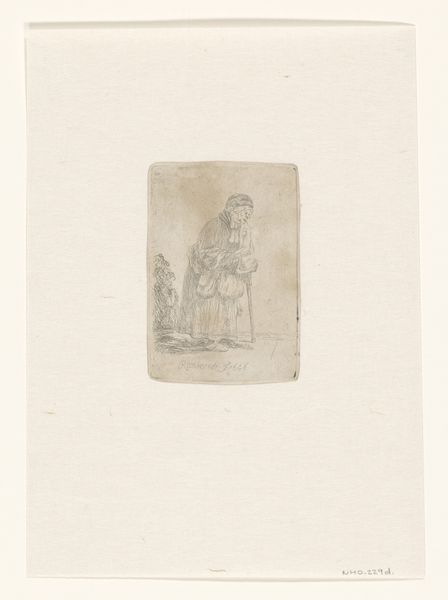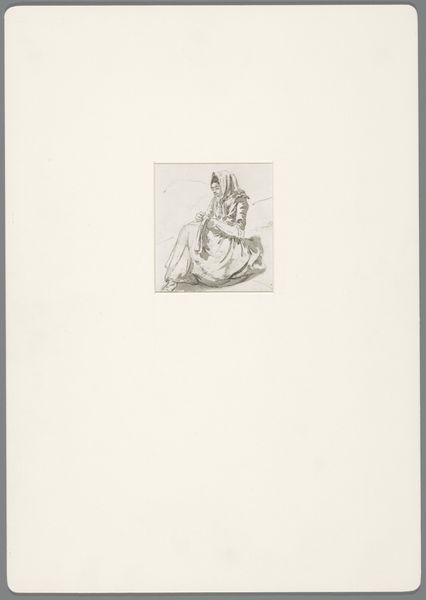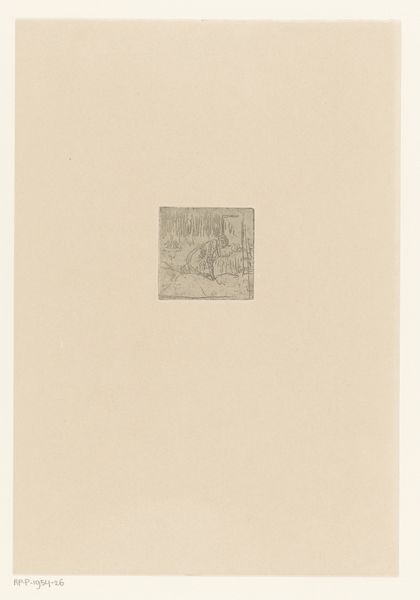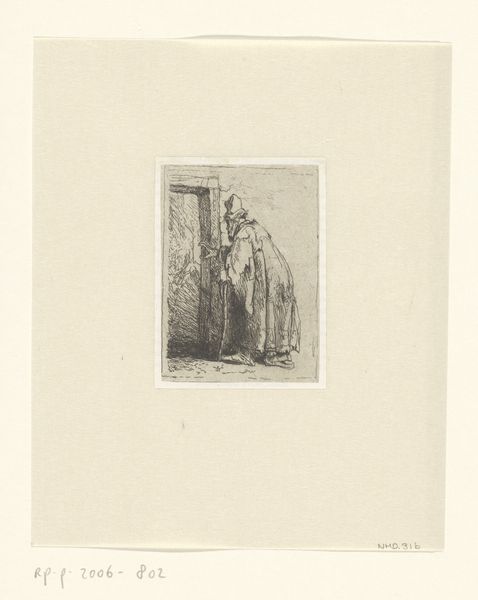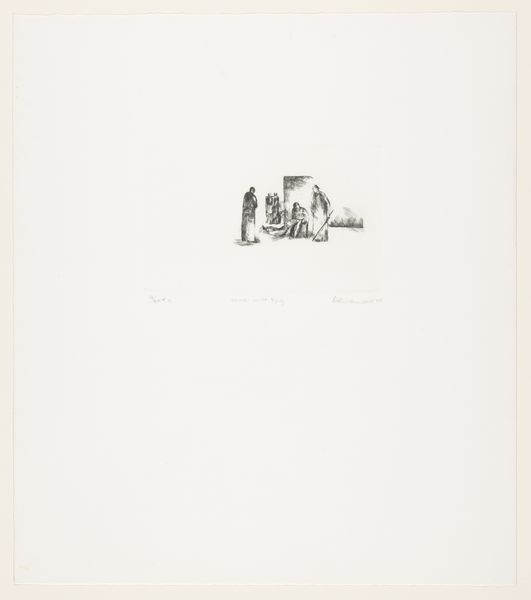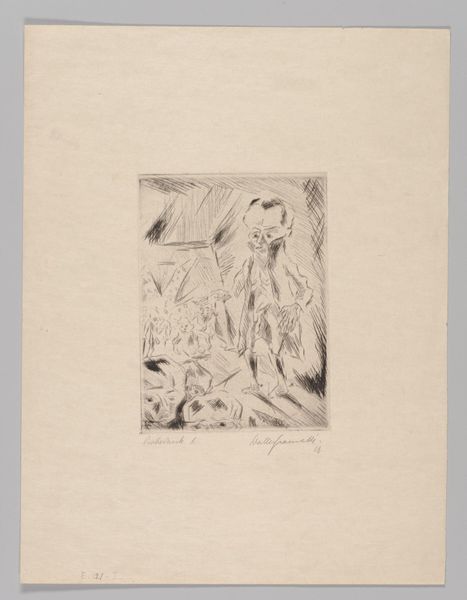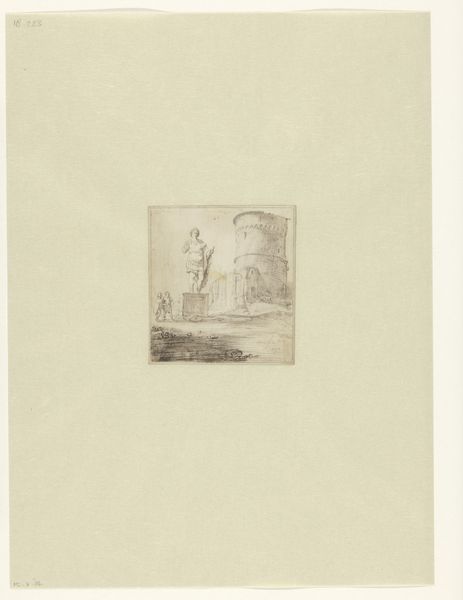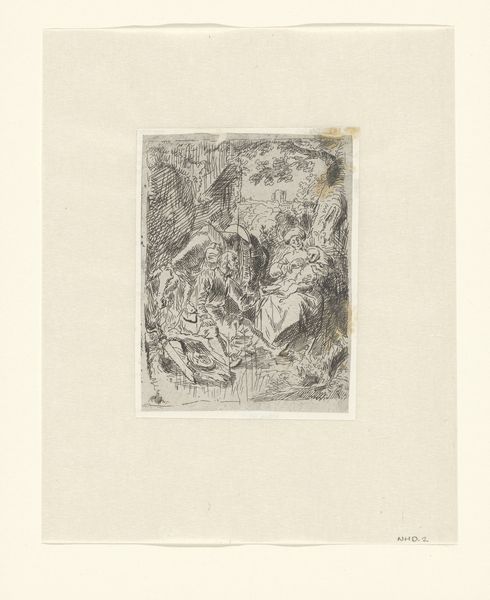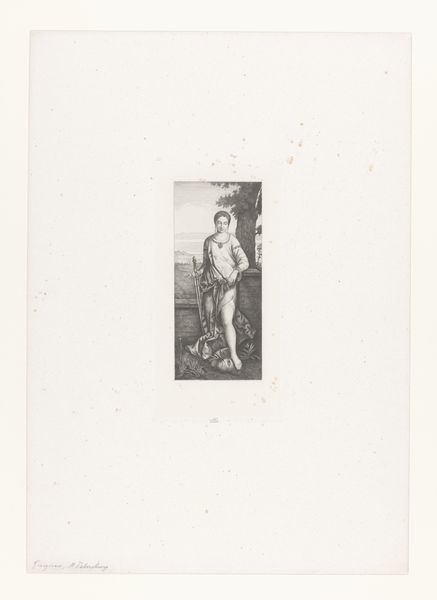
Dimensions: height 119 mm, width 149 mm
Copyright: Rijks Museum: Open Domain
Curator: This is "Grazend paard, beladen met twee manden," or "Grazing horse, laden with two baskets" attributed to David Alphonse de Sandoz-Rollin, dating roughly from 1750 to 1809. It is a print executed using ink, demonstrating engraving techniques of the time. Editor: The sheer simplicity of the lines, rendered in what seems like monochrome ink, really catches the eye. There's an undeniable rustic charm to it, isn't there? Curator: Indeed. The composition itself, while appearing simple, relies heavily on contrasting lines to delineate the horse and the landscape. Observe how the density of the hatching defines the texture of the horse’s coat and the woven baskets. It's almost Baroque in its attention to surface. Editor: Yes, and those baskets! They appear hand-woven; their structure hinting at the hands that crafted them. This engraving speaks to the animal labor intertwined with the labor needed to manufacture, transport, and consume the goods placed in those baskets. Curator: Note also the somewhat Romantic interpretation of the rural landscape. While functional, the engraving’s placement within the larger frame evokes notions of nature’s inherent beauty and simplicity, concepts highly valued in Romanticism. Editor: Right, the artist made clear decisions to position the animal within a context that values the simple beauty of rural life, thus lending dignity to an ordinary beast of burden through artisanal and even manufactured baskets. How fascinating that this everyday scene would find its way into printmaking. Curator: Precisely. The print offers a fascinating lens through which we may consider genre painting traditions and landscape, as the themes intersect in the composition and in its formal qualities. Editor: It underscores the intrinsic connection between manual labor, the natural world, and consumption, as represented through humble means and the beauty extracted in making prints and drawings like this. Curator: Yes, its apparent artlessness is precisely where its artistry lies. Editor: An elegantly simple, quietly compelling snapshot from a bygone era.
Comments
No comments
Be the first to comment and join the conversation on the ultimate creative platform.
